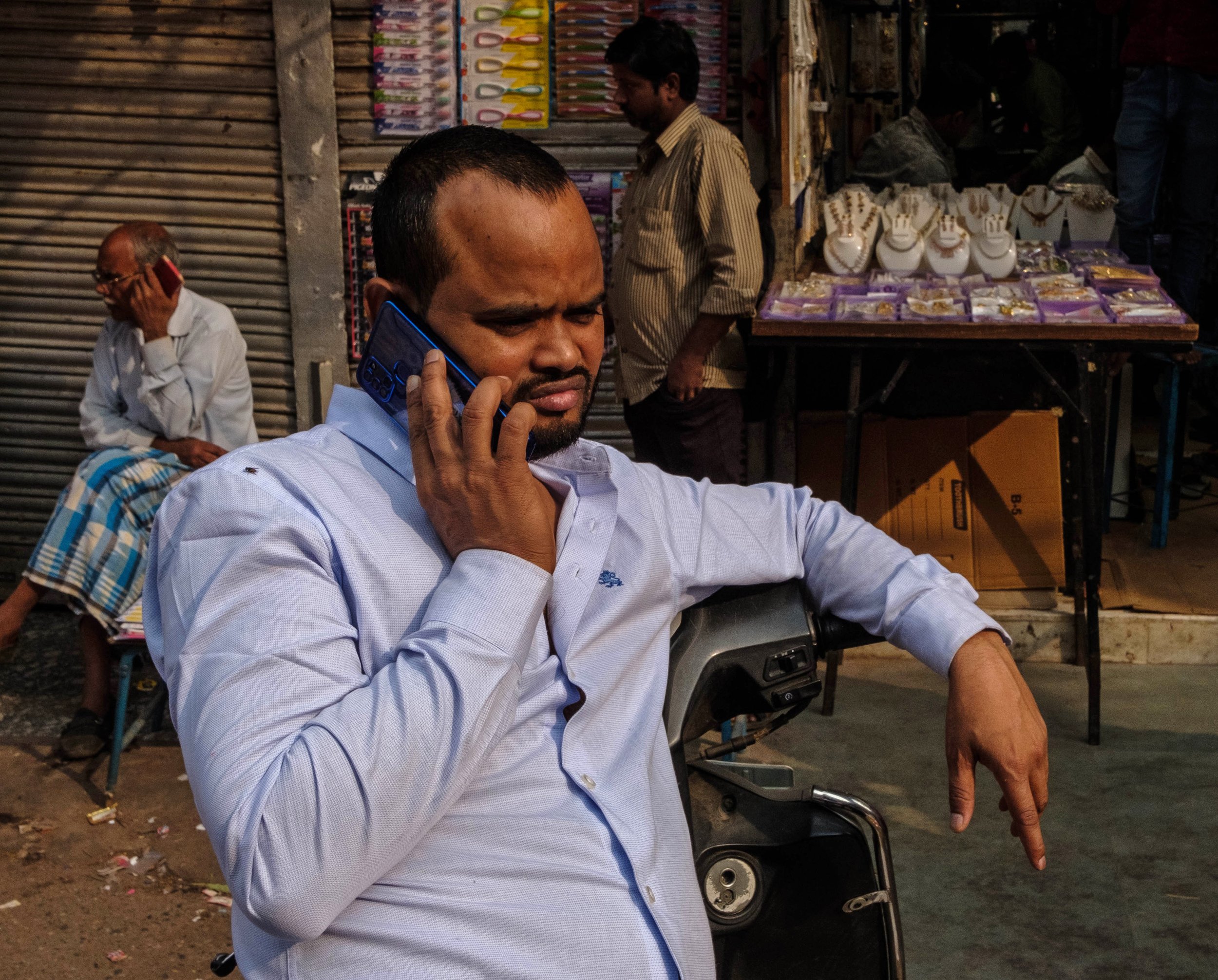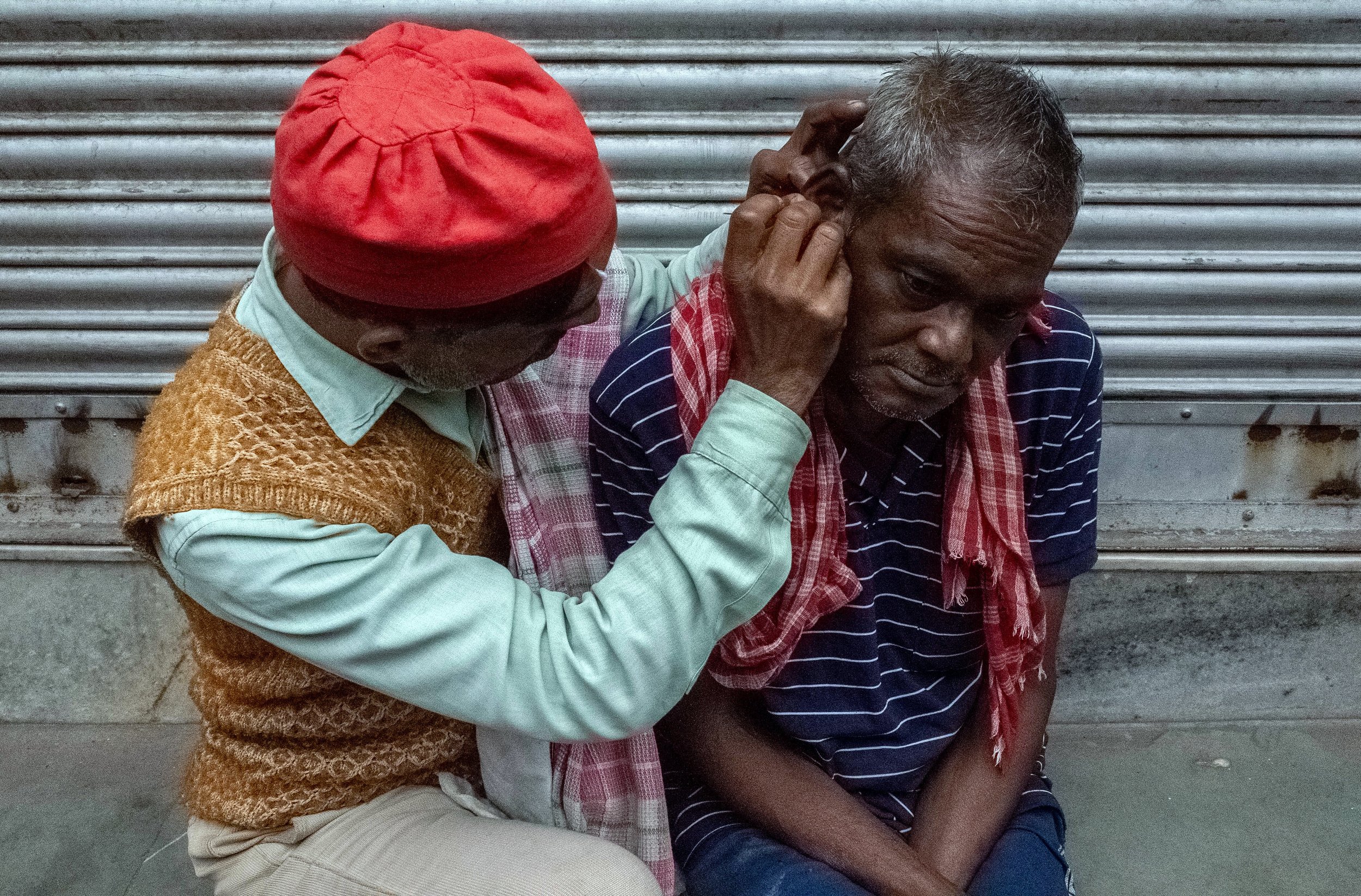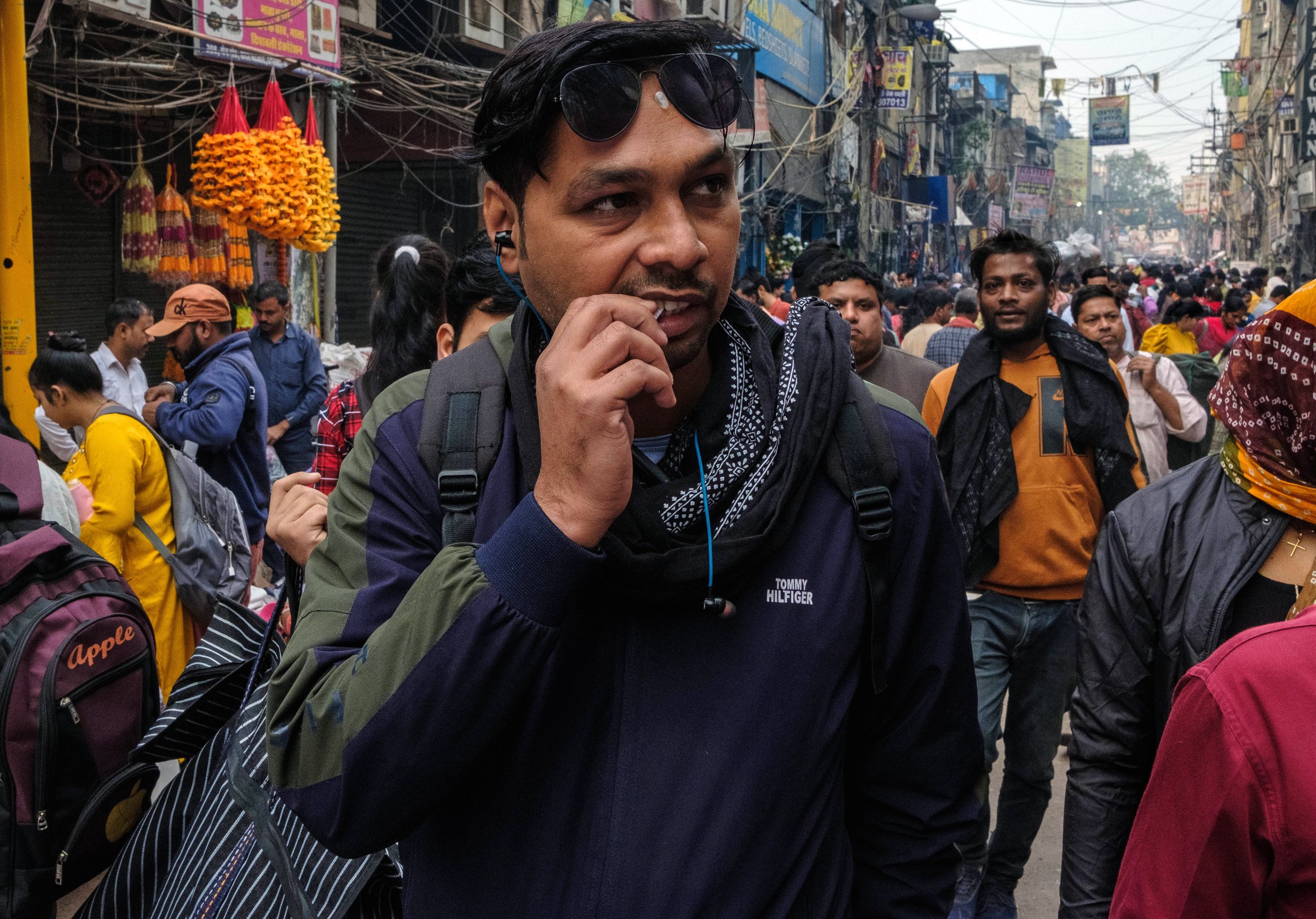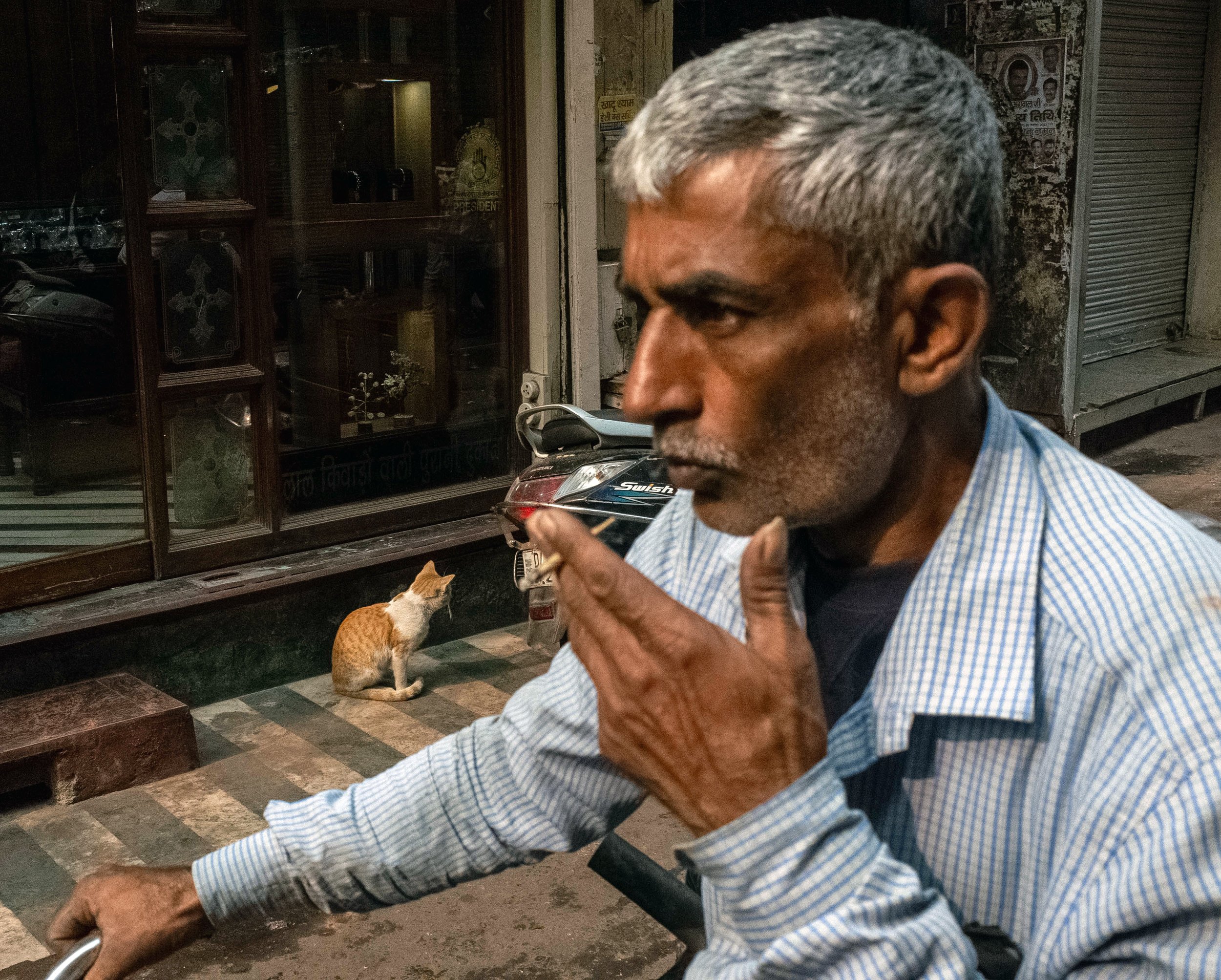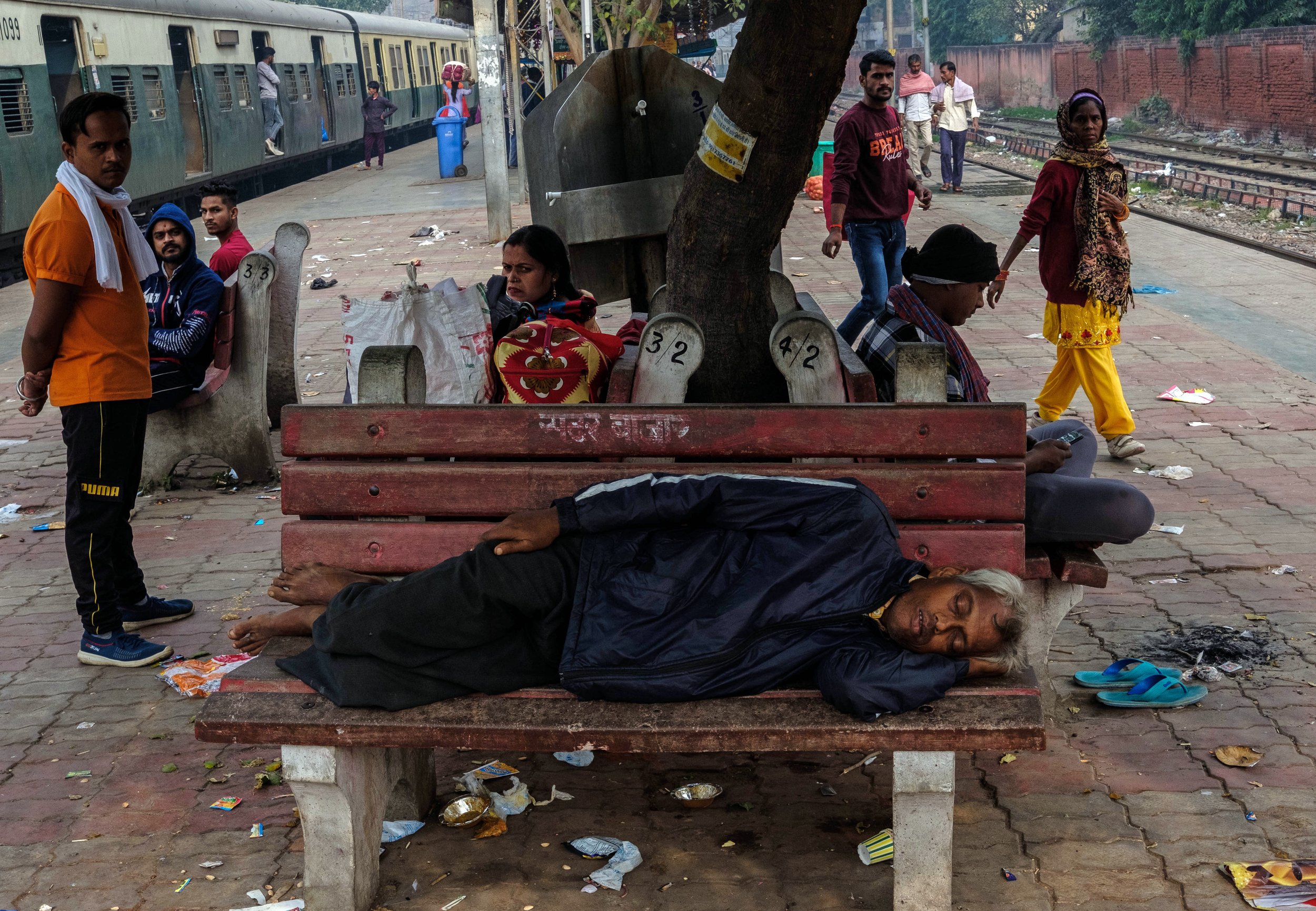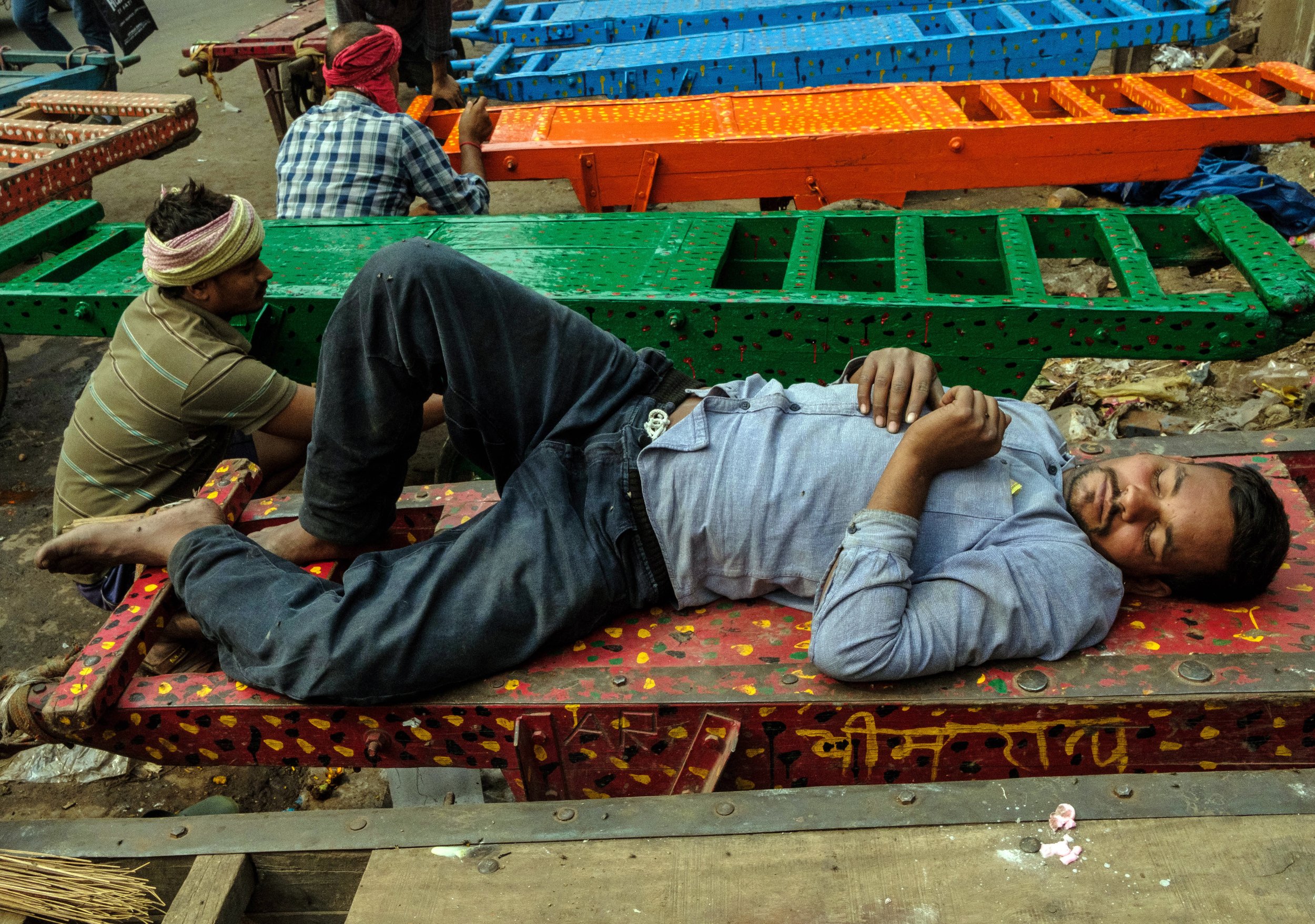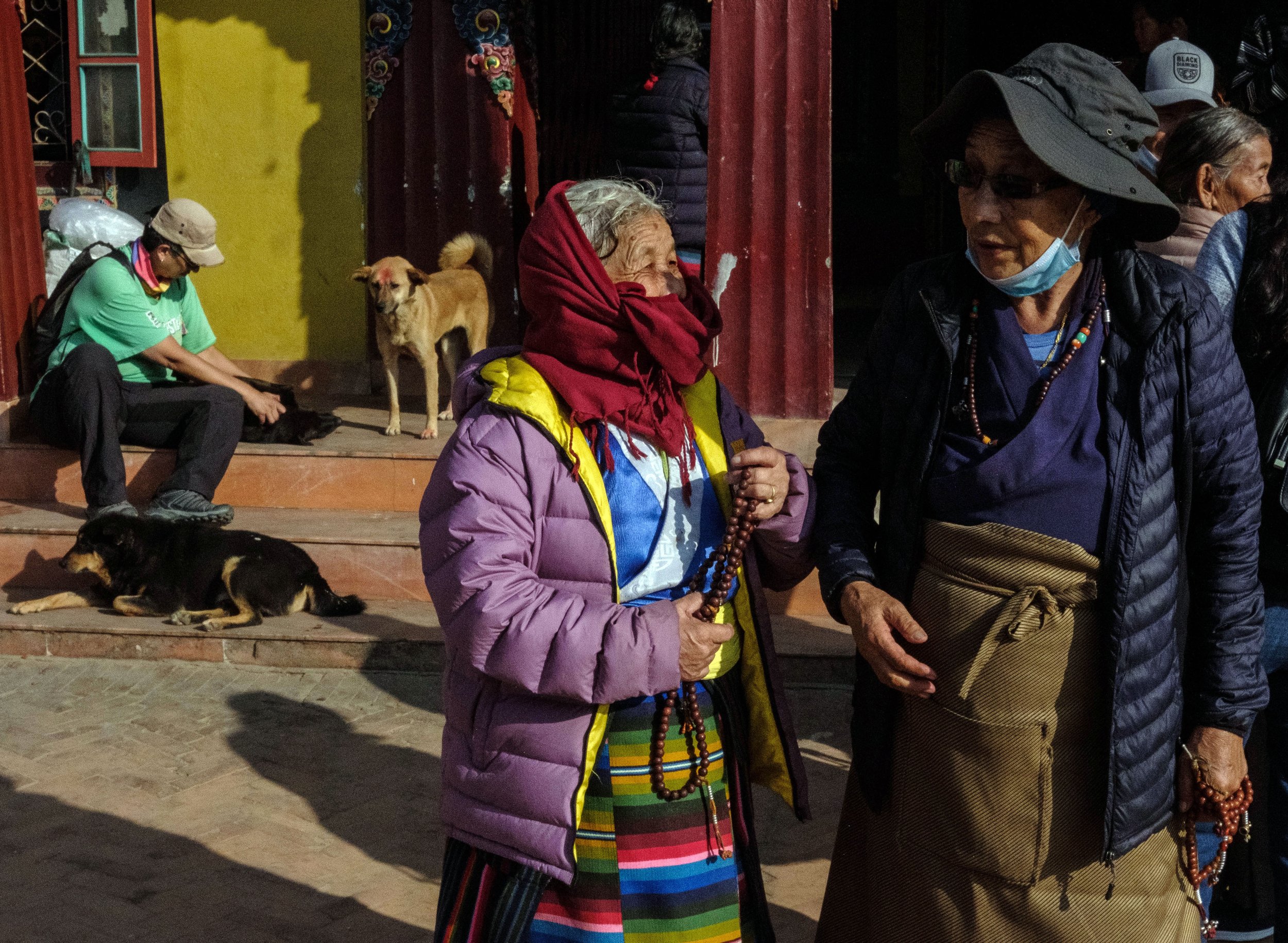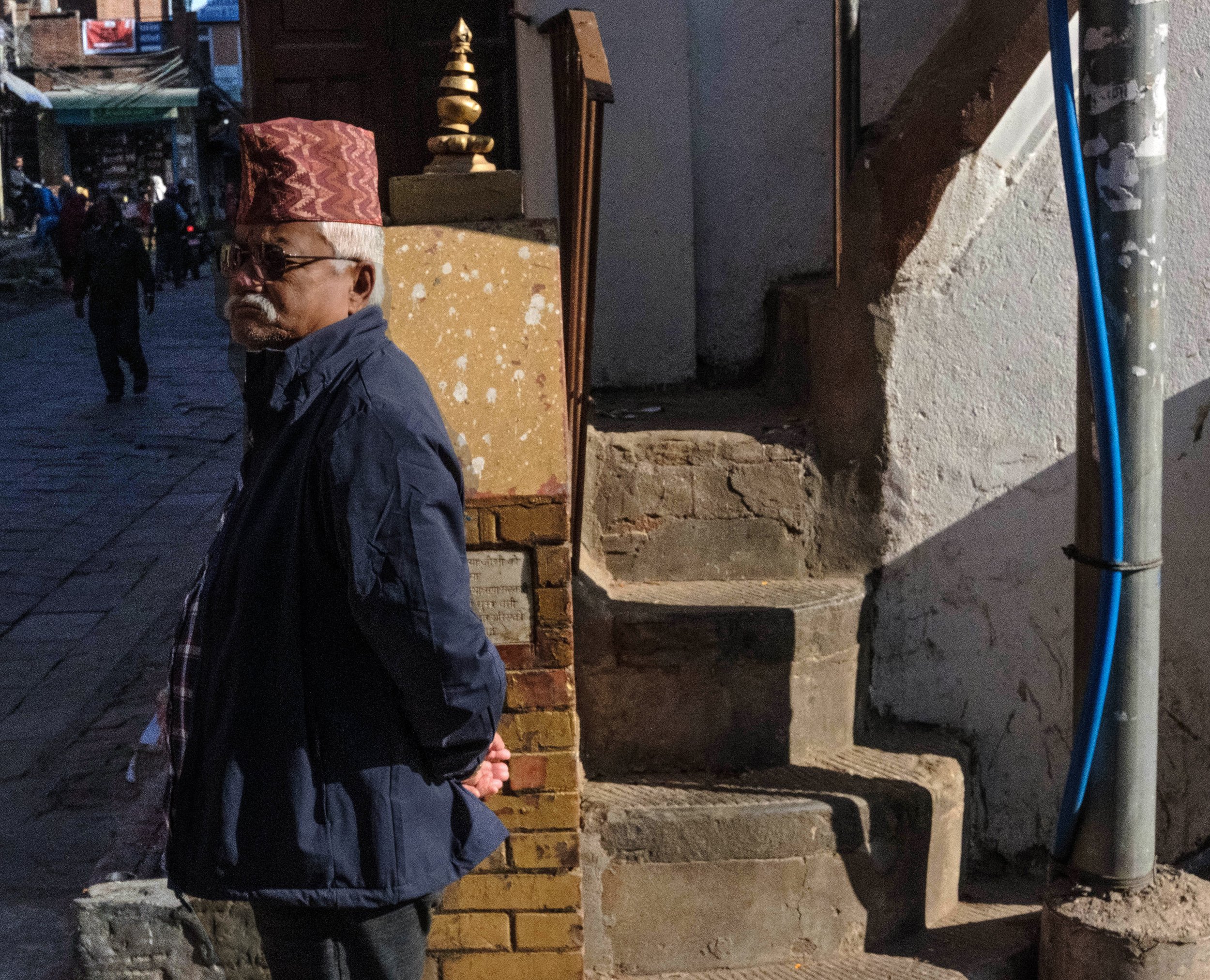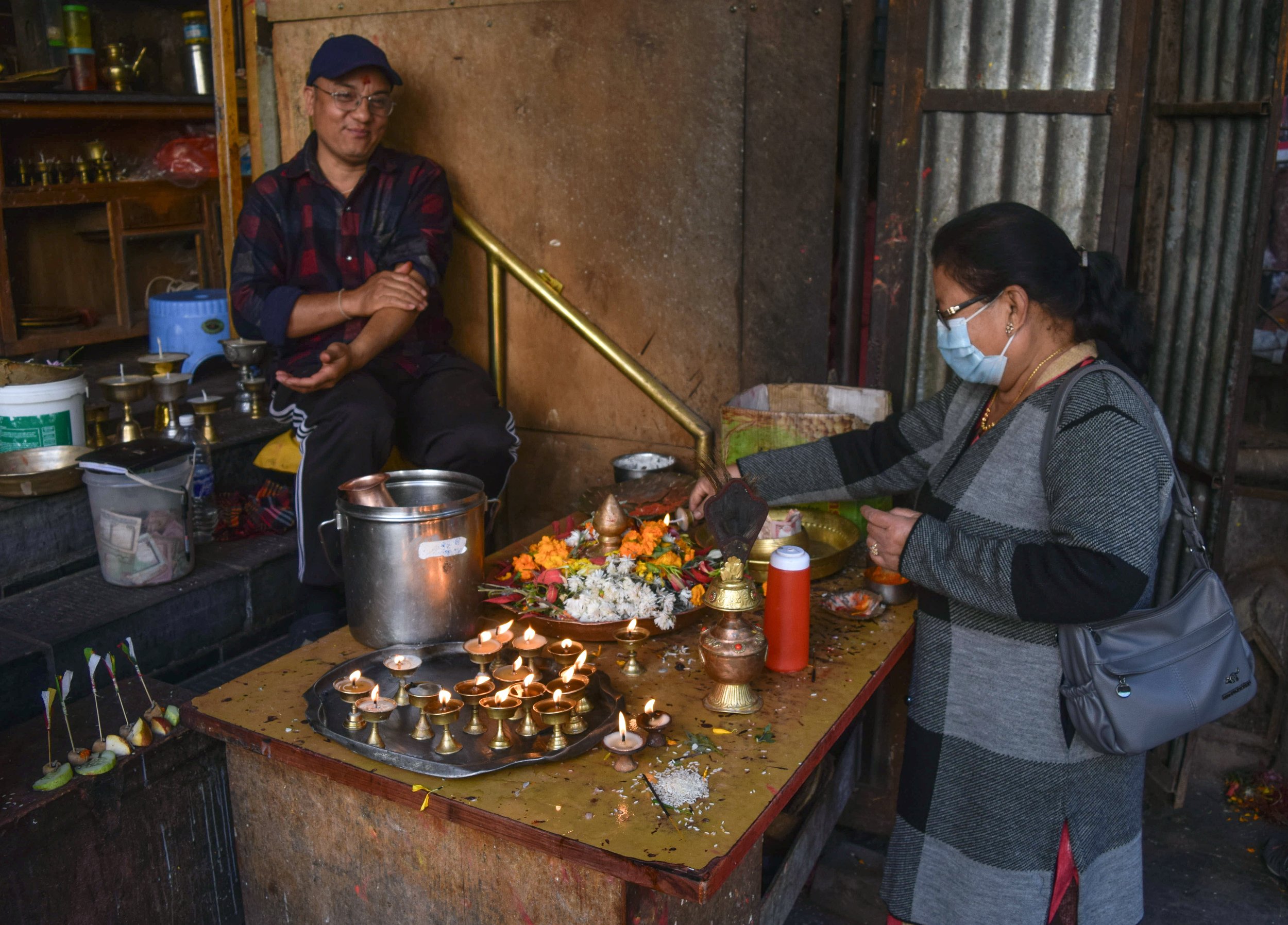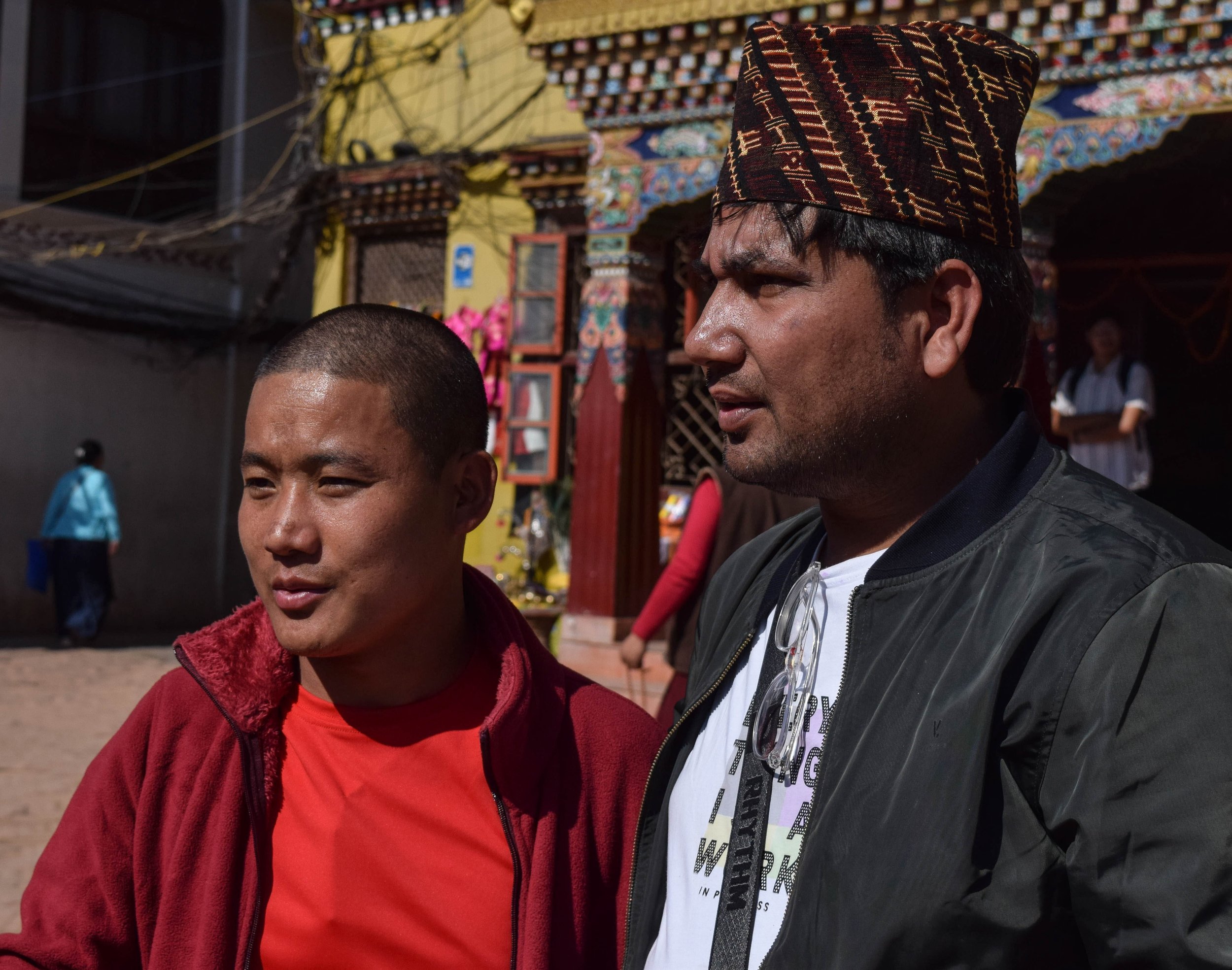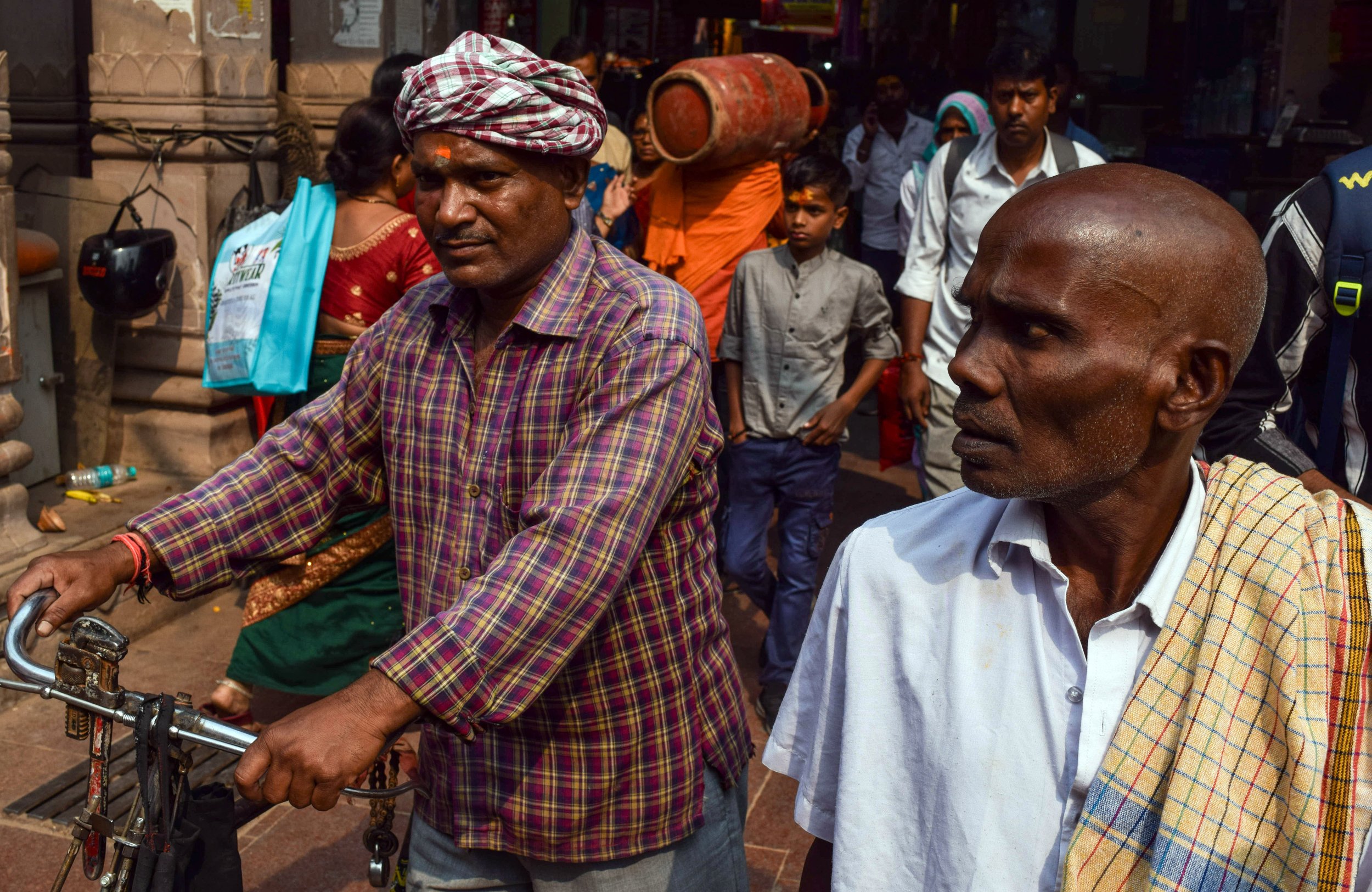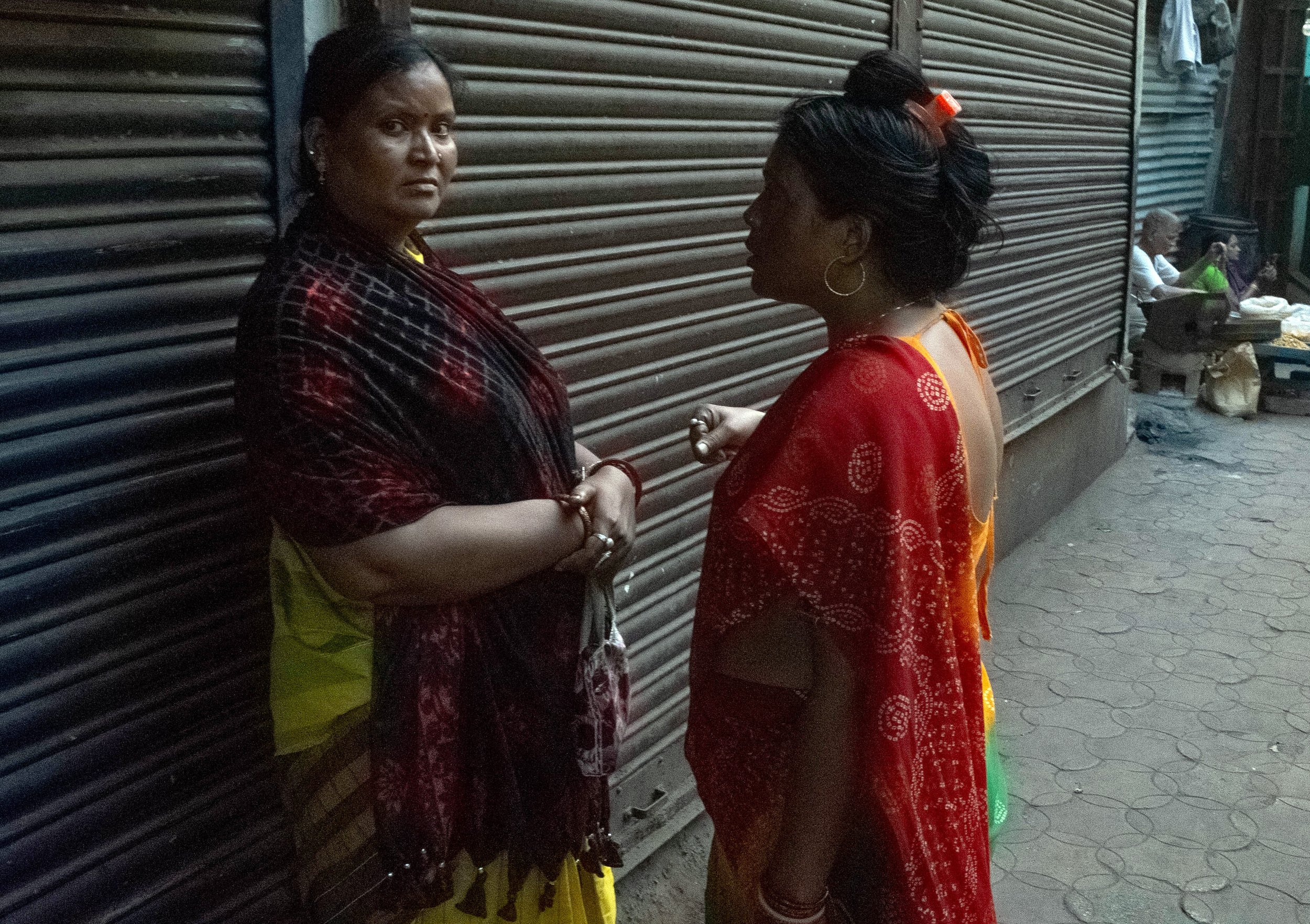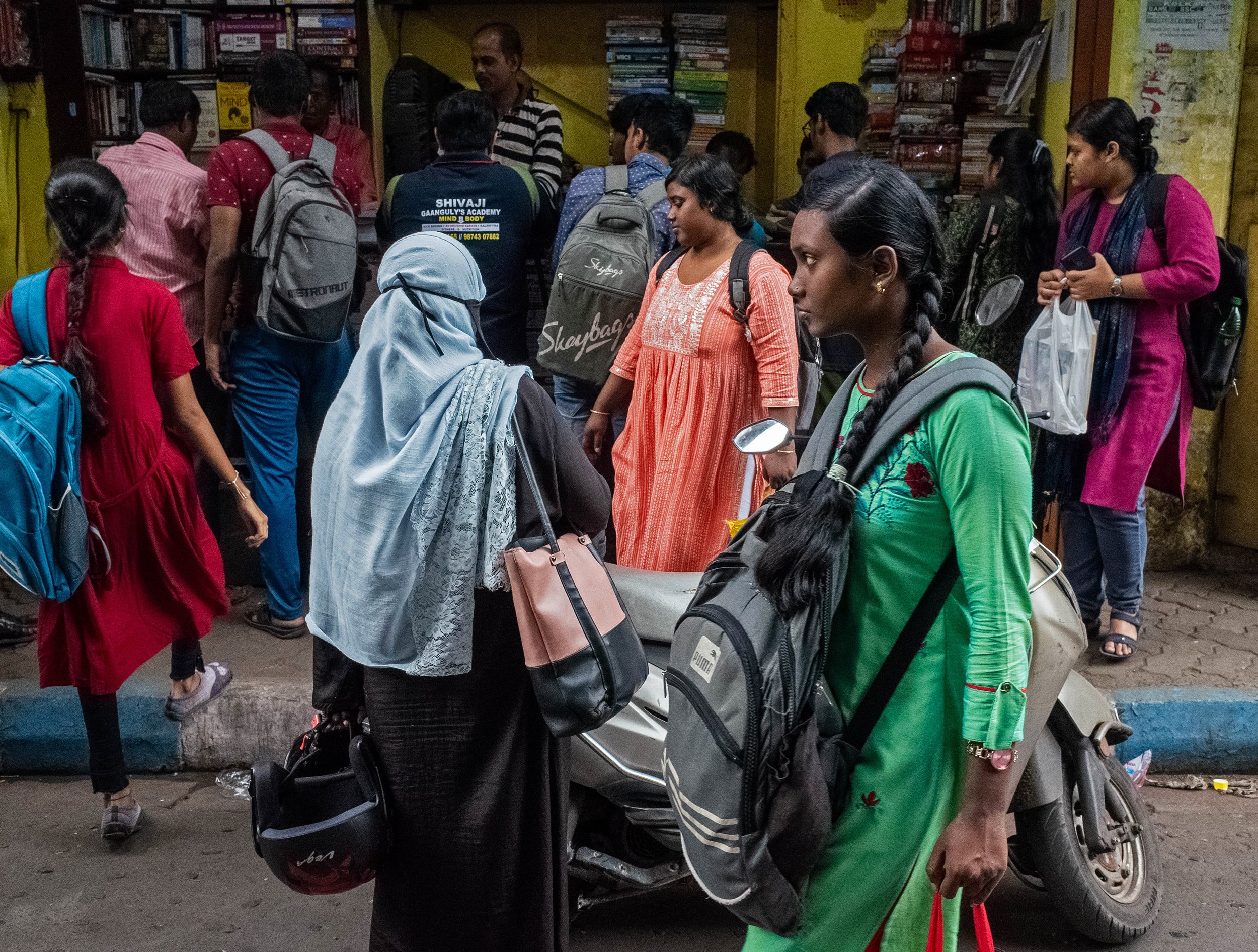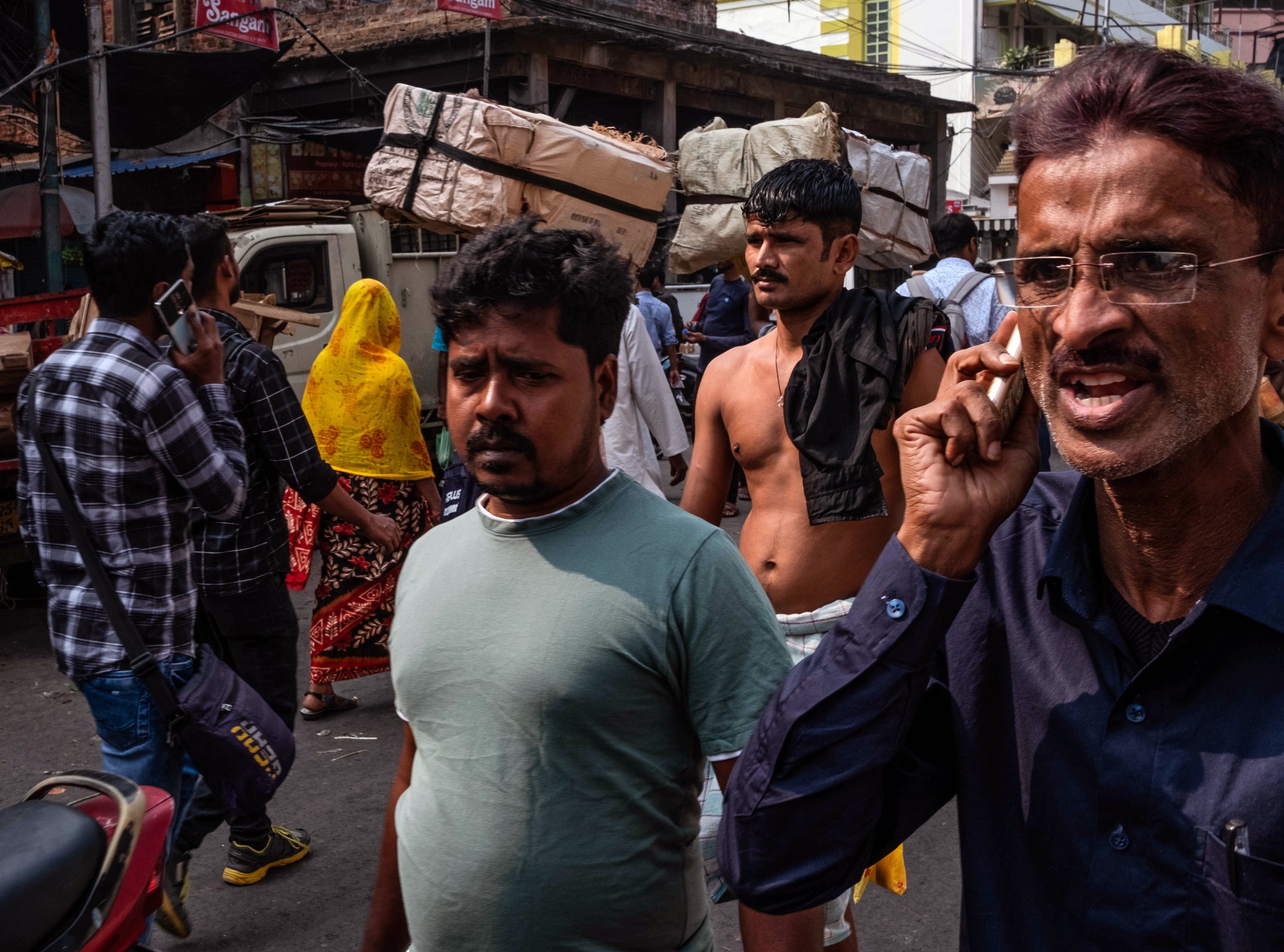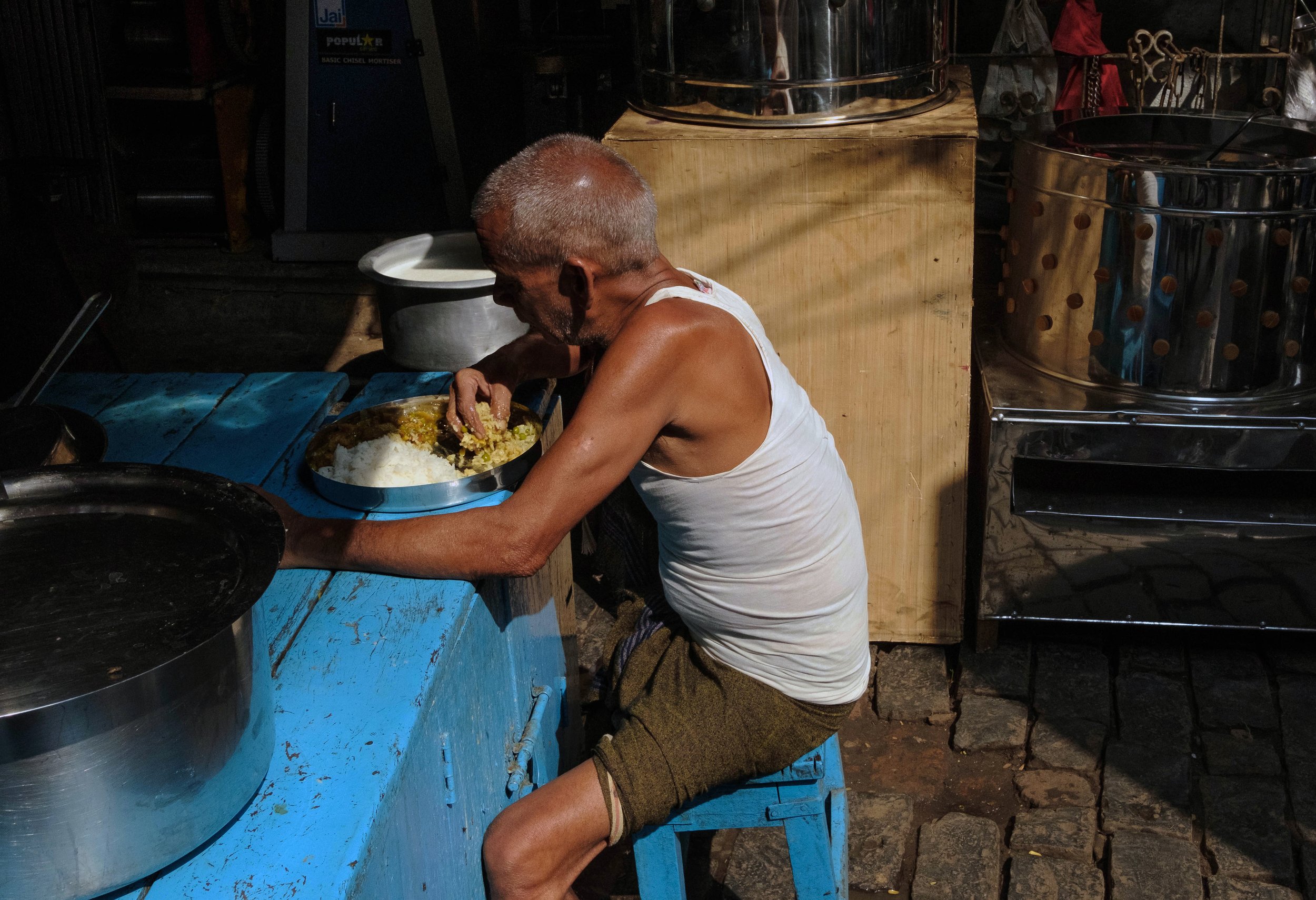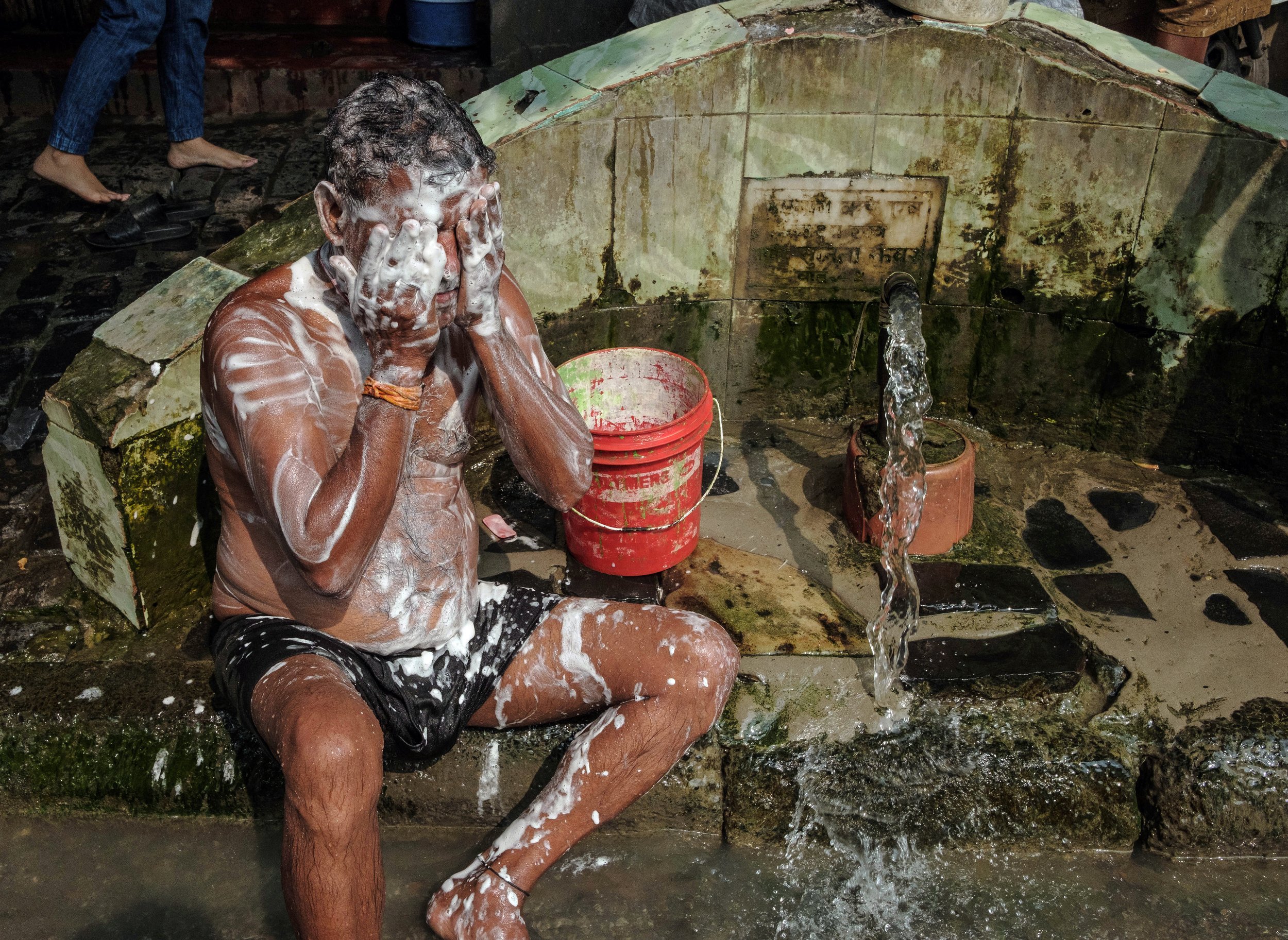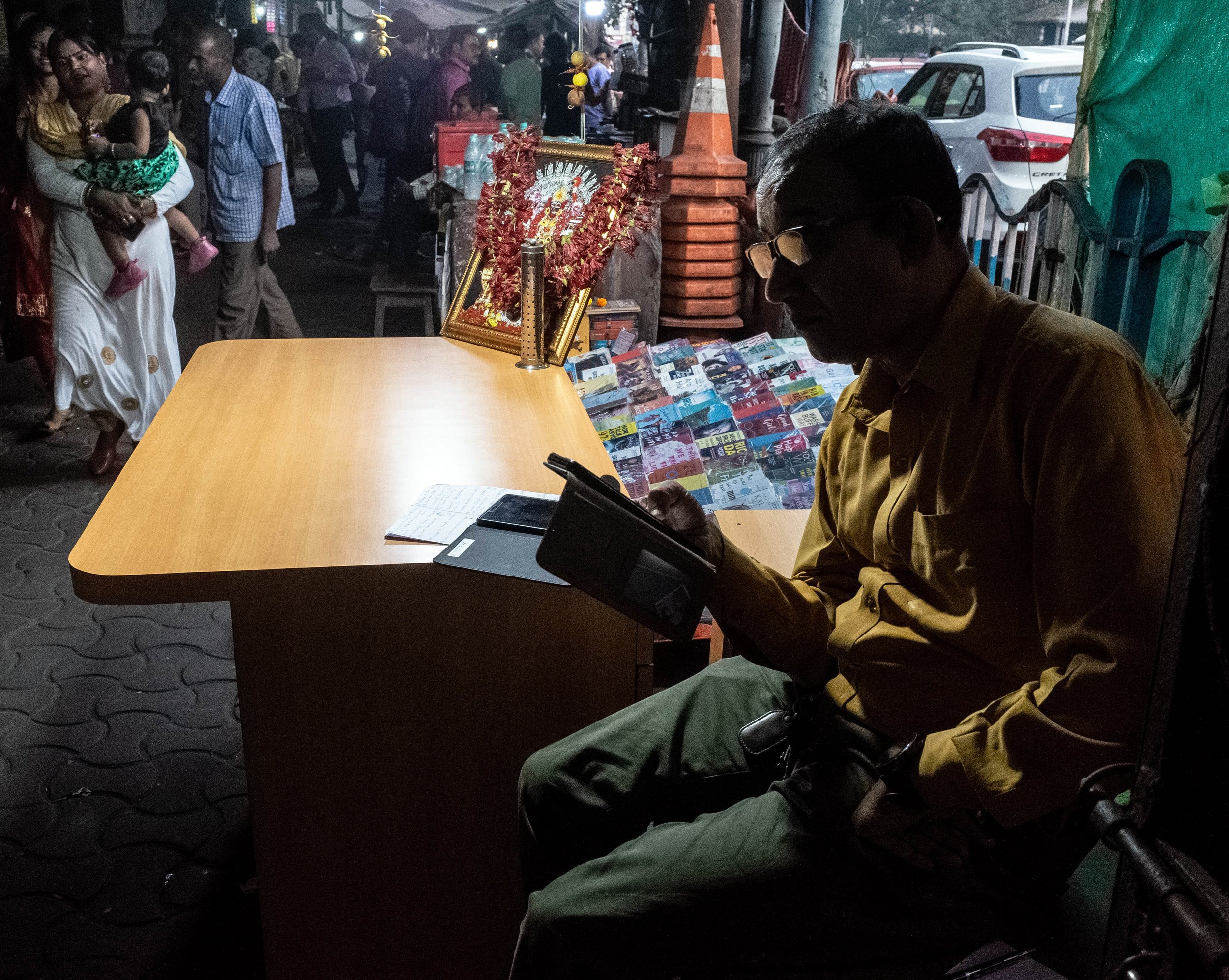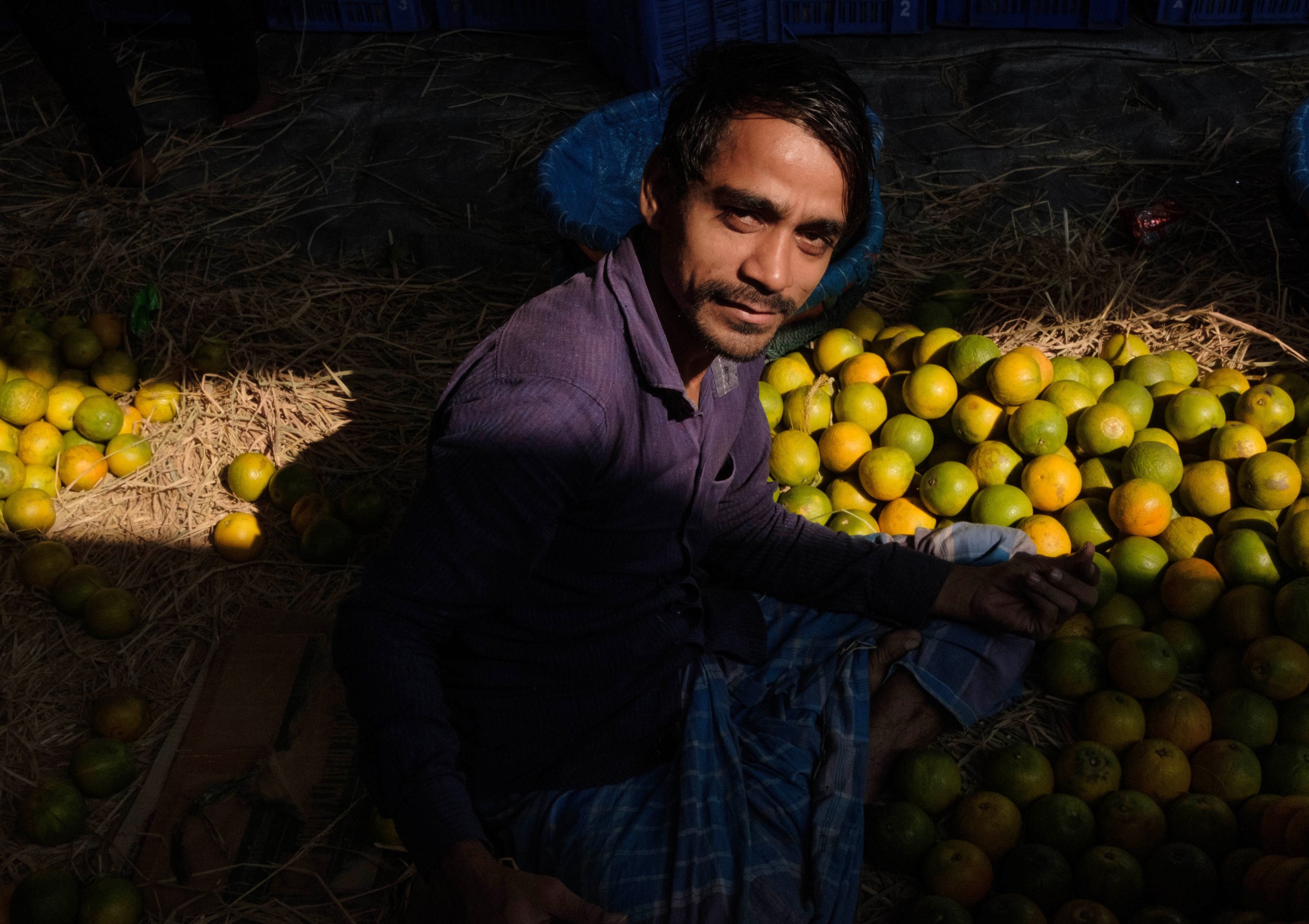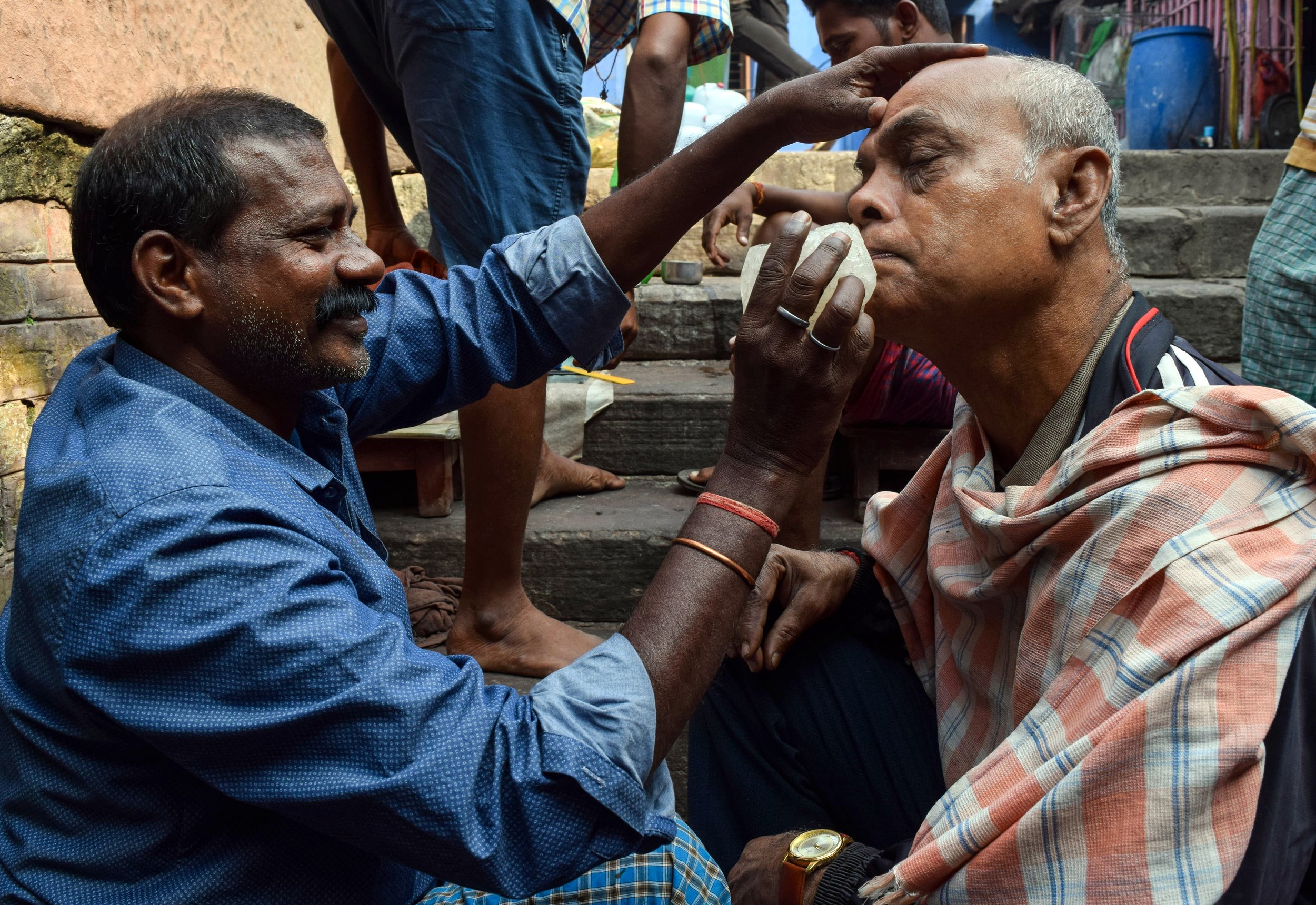Letter from Seoul - 4
I Walk These Streets
The more I travel the more I want to travel.
Like anyone with a well-worn passport, I travel to lose myself and to find myself; to become young again and to gain wisdom; to sharpen my senses and be transformed like the best love affairs that never really end. And to travel with a camera is essential for those times when language is inadequate for conveying the perceptions of atmosphere and the dualities of light and darkness. I have been on the road for as long as I can remember.
During both the First Act, my misspent youth, and the Second Act, the years of being a wage-slave with a diploma, my travels were largely imaginary, confined to literature, histories, travel books, and endlessly reviewing maps from National Geographic that decorated so many walls in countless cheap apartments.
I did not acquire a passport until I was 50-years-old. I’ve been making up for lost time ever since. I have worked in Bahrain, Germany, England, Japan and South Korea, and used these locations to travel widely in the surrounding regions.
Long before retirement and being marked for a coffin dodger, there was a slow-burning disenchantment with my marriage of nearly four decades. No matter how many pages are added to a passport for visa stamps, sometimes the most distant shores lie within the person asleep at our side. And if the professional job is nothing more than a Stepin Fetchit routine that makes you ask each morning: “What fresh hell is this?” it’s time to get off your knees and walk away. At least the women that populate Bangkok’s Nana Plaza are honest about what they do for money. Rather than go on as a dreary fraud living a life of quiet desperation, I closed the book on all that idiot wind and hit the road with undisguised zest. It’s one the best decisions I’ve ever made.
* * *
I can be Irishly stubborn and resisted the idea of India until several years ago, when most American men start shopping for an easy chair and a cheap set of golf clubs. For decades I told myself about India: “never, not in this lifetime, when hell freezes over.” Everyone knows the folly of saying “never.”
Ryan Goris, a longtime friend, once told me that if I ever traveled to India, I would never be the same again. The advice was spot on.
One day while on the Circle Train in Yangon during the fall of 2016, I had an epiphany. I had to experience India at least once. It was as if a ventriloquist made me say this out loud.
The woman who is now my wife said: “No way.”
And I said: “Way.”
There's an old saying that a man hasn't tasted the full flavor of life until he's experienced love, poverty and war. The American writer O. Henry (1862-1910) even wrote a short story in which a hapless New Yorker gets involved in all three in one evening. The short story is The Complete Life of John Hopkins. But don't worry, this isn't about my love life or my struggles with poverty – or the hell of war, which thankfully I have never experienced. It is, though, about a fourth experience known as India. There is no place on this planet quite like the country.
My recent passage to India (thank you, E.M. Forster) marks the fourth time in six-years. During the recent COVID Plague, I was in mourning for the loss of travel in my life - and even considered dressing in black. There are several influences that changed my attitude, chiefly the travel books of British writers Patrick Leigh Fermor (1915-2011) and Bruce Chatwin (1940-1989), two of the best from the second half of the 20th century. Both writers were drawn to distinctiveness in all spheres: remote communities, disappearing languages, secret castes, national characteristics, and residents of any “hinterland.”
I would be terribly remiss if I did not acknowledge the influence of both George Santayana (1863-1952) for The Philosophy of Travel, and Pico Iyer (b. 1957) for Why We Travel.
Yet a lot of credit for my growing fascination with India also goes to contemporary photographers Doug Hilson and Dick Verton. Both are regular contributors to various Facebook Photography Groups. The only reason I bother with the social platform is to be inspired by other photographers. And there are many talented people who impress me.
* * *
In their highly personal works, writers like Henry Miller (1891-1980) and Louis-Ferdinand Celine (1894-1961) – major influences earlier in life, suggested nearly a century ago that the experience of life can only be expressed through words. Even though I collected an English Literature degree in college and worked as a journalist for 20-years, that viewpoint is far too narrow, impossibly arrogant and just plain daft. I’m with American Civil Rights Leader Malcolm X (1925-1965) who said: “By any means necessary.” While Malcolm X had political goals in mind, his view toward achieving results applies well beyond the political spectrum. Besides, he distills Machiavelli down to four direct words. It works for me.
Even a brief trip through any first-rate art museum instantly disproves that the experience of life can only be expressed through words. I can’t explain why it feels natural to express myself through both language and photography. It is my fate, and any introspection only makes me neurotic.
Besides, if I really embraced the motto of Delphi and knew myself, I would only pluck out the heart of my mystery, as Hamlet admonished Rosencrantz and Guildenstern as they practiced to deceive at the Castle of Elsinore.
I’m good with the Zen calmness of an Irish Setter.
Give me a camera any day to document life on the streets of vibrant bustling cities round the world, against the backdrop of George Gershwin’s exuberantly life-affirming Rhapsody in Blue, composed a century ago.
* * *
The recent 20-day itinerary for my fourth trip to India included New Delhi, Varanasi, Calcutta and a side-trip to Kathmandu in Nepal.
When I visit India, I’m not interested in the stock tourist sites like The Taj Mahal at Agra. I have been to Agra, and The Taj Mahal is stunning. But I want to go off the beaten track and see how the people of India really live. To this end, I rely on Anil Sharma of New Delhi as my guide, mentor and walking companion. We’ve had this arrangement since 2017. The 52-year-old Sharma is first-rate and our relationship is less business and more as compadres. He’s accustomed to how I go with my instincts and pursue places that most tourists would never consider. Because of this, I’m in his debt for any success I’ve had documenting life in India. Sharma is the gold standard as both a professional guide and a damn good friend. And he can be easily found on Facebook.
* * *
New Delhi - November 2023
My wife who always says she is not going to India with me always makes the trip. What’s not to love about her?
Because she is Korean, her suitcase features a fair amount of home-based food and even some modest cookware. This is no joke. According to tour guides in India with Korean groups, all the wives pack food from home – and that includes some requisite kimchi.
For this trip to India, we stayed at the Metropolitan in New Delhi, the Raddison in Varanasi and the LaLit Grand Eastern Hotel in Calcutta – all quite classy places. Yet there is nothing quite like the seventh-floor restaurant of the Tibet Hotel International in Kathmandu as the morning sun gradually ascends over the Himalayan Mountain range in the East and kicks off a new day of possibilities. And from that majestic vantage point, it is easy to see how Kathmandu – the capital of Nepal, a city of four-million people, spreads out across a hilly region near the confluence of the Baghmati and Vishnumati rivers, at an elevation of 4,344 feet (1,324 meters) above sea level. And down below, at street level, just two blocks from the Tibet Hotel International, is the World Heritage Boudha Stupa. Its massive mandala makes it one of the largest spherical stupas in the world. All through the day, the believers round the stupa in prayer and meditation, walking the wheel, the circle of life.
* * *
Thinking about converting to Hinduism with multiple deities for spiritual fulfillment?
The idea of attending a public cremation during the lunch hour is not high on my list. However, such was the case one recent afternoon in Kathmandu.
For a side-trip to neighboring Nepal, this required a different tour guide and driver arrangement - similar to a blind date. A guide and driver were at the airport waiting for our arrival. This is a classic example of “buy the ticket, take the ride.” Sometimes you click with the guide, other times not so much. Most times, however, it is "comme ci-comme ca."
While in Kathmandu, my guide – a fellow old enough to be my grandson, took us to what is called “Little Varanasi,” because of the 24-hour cremations. Though these ceaseless public cremations are common everywhere in both India and Nepal – and Bali for that matter, Varanasi seems to own the title for being the epicenter of this non-stop ritual, with people bathing in the waters of the Ganges River as the ashes of newly cremated bodies float downstream toward Calcutta and the Bay of Bengal before moving onto the greater Indian Ocean.
In Kathmandu, the cremations occur at Pashupatinath Temple at Arya Ghat on the banks of the Bagmati River, a tributary of the Ganges River. After the deceased has been adorned in appropriate robes and placed on the burning funeral pyre, the body is respectfully moved to a wooden slab on the nearby stone stairsteps, where its feet are cleansed for the next journey. Following this age-old ritual, a slender rod is driven into the skull of the deceased, creating a small hole for its spirit to escape and make its way to the body of another life form. Male members of the deceased are expected to shave their head for one year out of respect for the deceased.
For the cremations along the banks of the Bagmati River, only the immediate family and close friends of the deceased are permitted in the area. Everyone else is expected to watch from the opposite bank of the river. I met up again with Anil in Varanasi, and he remained with us as we traveled on to Calcutta and then back to New Delhi. I asked him if the Hindu cremation rituals in Nepal were the same as in India.
“Yes,” he said. “They are the same.”
“A hole is drilled into your skull to release your spirit for the next journey?” I asked.
“Yes.”
“Really?”
“Of course.”
* * *
Kathmandu - November 2023
For the next leg of our adventures, we flew from Kathmandu-to-Varanasi, about a 90-minute flight over the Himalayan Mountains on Buddha Air. When I came of age in a Jewish neighborhood of suburban St. Louis, immediately south of Washington University, there was a light-hearted saying in the hallways of Clayton High School: “Jesus saves, but Moses invests.”
At age 29, when Prince Siddhartha renounced worldly possessions in his quest for enlightenment, I’m not so sure he had Buddha Air in mind.
Varanasi - November 2023
By Sunday, November 26, we were down to our last full day in Kolkata before returning to New Delhi, and leaving India for Seoul on Thursday. The street life was not as vibrant as we expected because it seemed like the people of India were taking a cue from the West, possibly a remnant of the British Colonial Period, and spending time with their families.
Anyway, Anil suggested we stop by a major river where people might be gathered to bathe in the muddy water. And so off we went. I started walking in one direction and badly misjudged the surface – slick mud covering the concrete. In a split second, the ground gave way, and I slipped on my ass with my favorite Fuji camera in hand. Actually, I did not fall exactly on my ass; instead, I fell on my right side. By the Grace of Allah, Shiva, or Bob’s your uncle, my camera was completely unharmed. As for me, I looked like I had been wrestling in the mud with a pig in Oklahoma.
We were off to the hotel so I could shower off the river mud and change clothes. Then we were off to the Flower Market, where I think I did some of my better photography on the trip.
My upper right leg is almost as black and blue as it was two weeks ago. The play’s the thing.
Kolkata - November 2023
* * *
Once we returned to Seoul, my wife asked if I were finished with India.
To fly to a foreign country just to immerse oneself in the street life of the culture for photography is wildly indulgent. It’s true. Yet if this is a vice, I’ve had far worse during my misspent youth when I pursued a dedicated curriculum of hedonism.
I didn’t give her the answer she wanted to hear, because anything is possible.
I’m aware of a ticking clock, but I have no plans to stop. I still want to play.
And so I walk these streets with a camera because the allure of discovery is what makes life worth living.
* * *
In that bygone era of grade school, when a collection of students was together in the same room with the same teacher for an academic year, my sixth-grade teacher bought us all a smart looking paperback copy of Roget’s Thesaurus. If he had handed me a bag of gold, it would not have been as valuable as that 50-cent thesaurus. It changed my life.
For high school graduation, my mother presented me with a portable manual typewriter and a hardbound copy of Roget’s Thesaurus. I’ve had a half-century relationship with that edition – longer than my connection with any one person, and it has accompanied me from St. Louis-to-Seoul, and all points in between. That edition from 1970 remains an integral part of my book collection.
Allegedly, Christopher Hitchens (1949-2011), an immensely talented wit and writer, could imbibe liberal quantities of alcoholic refreshments throughout the day, hold forth with ease and intellectual dexterity on literary, political and religious issues at both formal lectures and lively parties - then sit before a keyboard at 1 a.m. and produce a stunning essay for Vanity Fair that marked him as the rightful heir to Gore Vidal in his prime.
I’m still waiting for lightning to strike, to know what I want to be when I grow up, to be enraptured by a muse who will inspire me as much as June Mansfield (1902-1979) shaped the life of Henry Miller (1891-1980), her husband, who went unaccompanied to Paris in 1930 and during this down-and-out period wrote countless letters to his wife and friends in New York City that became the material for the scandalous Tropic of Cancer – banned as obscene for 30-years, edited by his mistress and benefactor, Anais Nin (1903-1977). Perhaps the best we can do is to be an interesting collection of contradictions.
Call me Kennedy. Ahab had his whale. William Burroughs (1914-1997) had his heroin. Bruce Chatwin (1940-1989) had his Patagonia. As for me, I have a camera and a passport.
The play’s the thing.
Michael Kennedy





